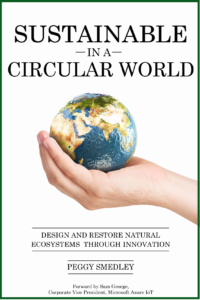In the race to net zero emissions, investment, commitment, and collaboration will be key to success. The IEA (Intl. Energy Agency) reports in order to reach net zero emissions by 2050, annual clean energy investment worldwide will need to triple to reach about $4 trillion by 2030. In fact, IEA says what’s happened up to this point is simply not good enough, considering CO2 emissions have increased significantly (by 60%) since the United Nations Framework Convention on Climate Change in the early 1990s.
Achieving net zero emissions by 2050, therefore, will require “nothing short of the complete transformation of the global energy system,” IEA says in its report. Most of the technologies that will help reduce CO2 emissions between now and 2030 already exist and are on the market. But IEA suggests many of the technologies that will help reduce emissions between 2030 and 2050 are in a demo or prototype phase.
Water utilities committed to using existing technologies to decarbonize are leading the way for other utilities to do the same. As of April, at least 81 water and wastewater utilities worldwide had set net-zero and climate-neutrality targets, and at least 26 had joined the UNFCCC Race to Zero campaign. A new report from Xylem, a global water technology company, called Net Zero: The Race We All Win demonstrates how some water managers are reducing their emissions and making infrastructure more resilient to climate change. The report suggests the water sector could become one of the fastest to decarbonize—and they could do so using existing technologies.
Patrick Decker, president and CEO of Xylem, says utilities are in a unique position to make a difference. “Utilities, already on the frontlines of the effects of climate change and aging infrastructure, and passionate public servants, are the key,” Decker says. Xylem suggests water infrastructure accounts for about 2% of global GHG (greenhouse gas) emissions and a medium-sized water utility could reduce emissions equal to 150 transatlantic flights per year.
The report provides case studies from utilities such as EWE WASSER GmbH, a large municipal wastewater treatment utility in Germany, which leverages technologies like digital twins and virtual sensors to reduce aeration energy use by 30%, as well as the South Bend, Ind., water utility, which implemented a smart sewer program that leverages a realtime monitoring system throughout its urban watershed. The sensor network eliminates sewer overflow and saves on operating and maintenance costs. Xylem says the smart sewer program has had an indirect carbon-reduction effect by preventing needless construction of a new infrastructure system.
Whether utilities are directly reducing carbon output or implementing smart solutions that prevent carbon-producing activities like construction, the use of technologies is helping them make a difference in the race toward net zero. Asset optimization solutions, digital twins, and leak detection solutions are some of the ways water utilities are applying the IoT (Internet of Things) to move the needle toward this global goal. Xylem outlines some best practices leading utilities are using to set the pace, including creating a net-zero strategy with realistic and measurable targets, pursuing cost-neutral strategies to reduce emissions while ensuring process stability, and embedding net-zero goals in capital planning, among others. With collaborative effort, utilities can and are making a difference in reaching a net-zero future.
Want to tweet about this article? Use hashtags #IoT #sustainability #AI #5G #cloud #edge #digitaltransformation #machinelearning #infrastructure #utilities #water #energy #netzero #IEA #climatechange #decarbonization #wastewater #digitaltwin #Xylem


